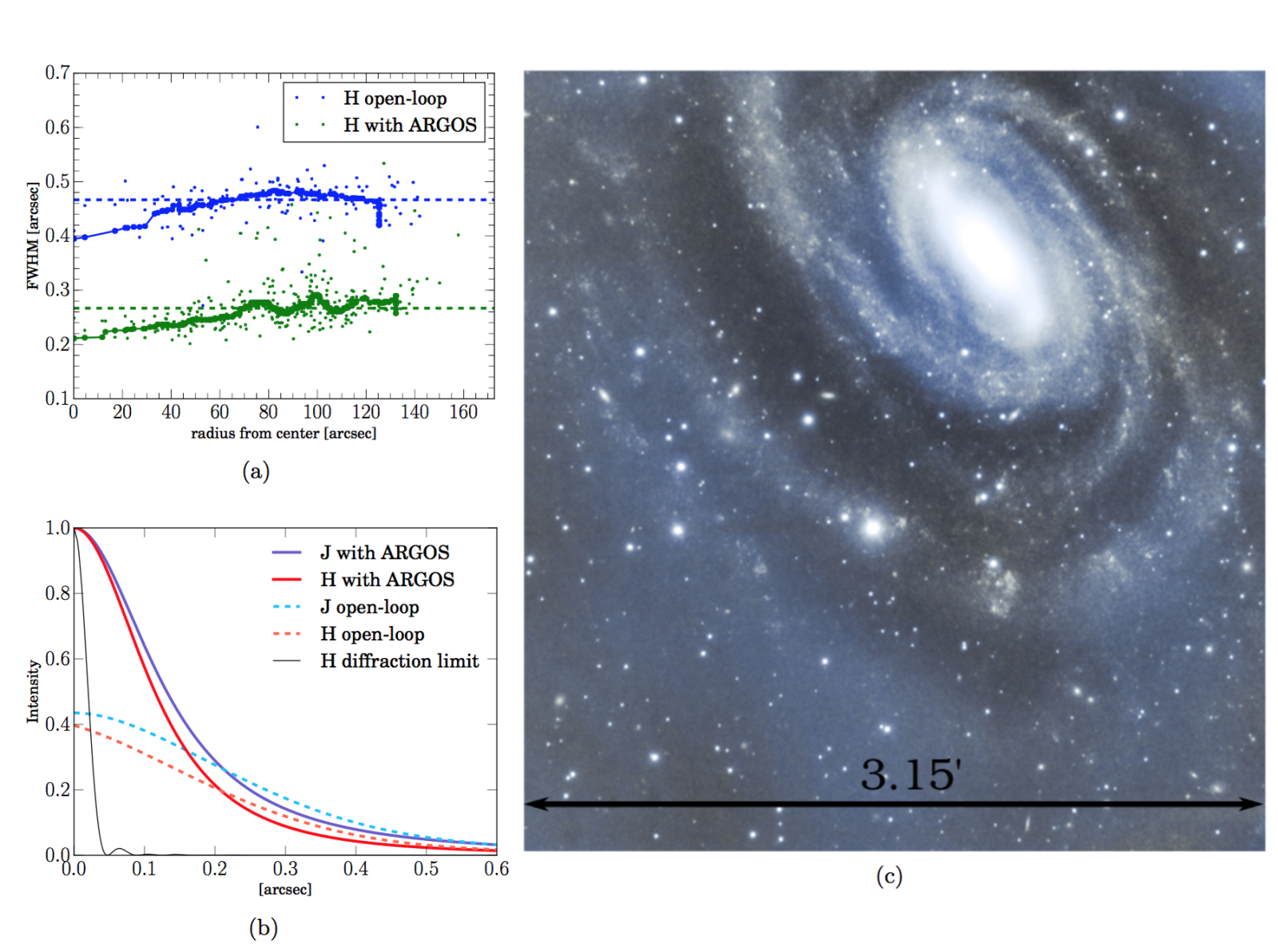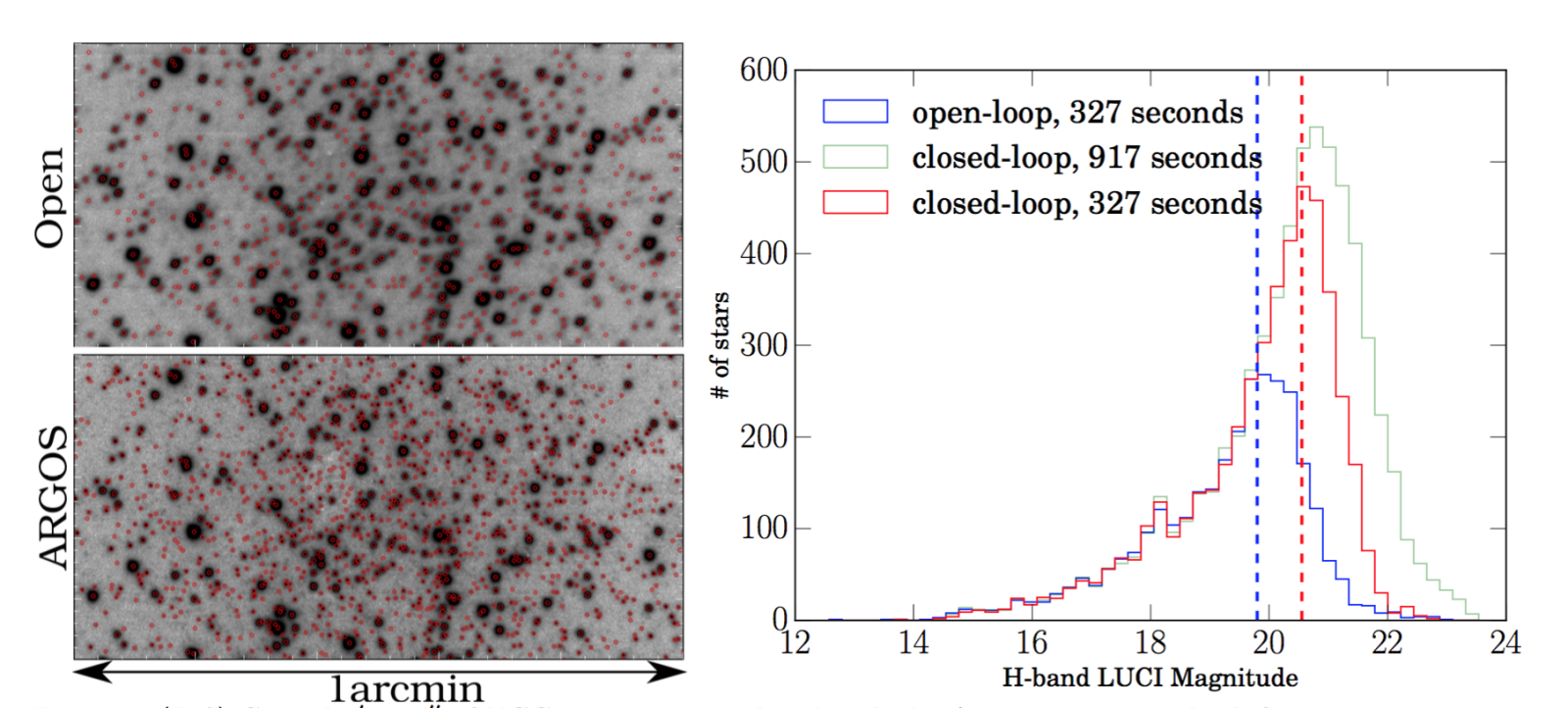ARGOS and ESM Strategies
The observatory is offering two new telescope modes for LUCI1 and LUCI2: Enhanced Seeing and ARGOS. Each of these is documented in detail in the LUCI User’s Manual in Section 4.1.
The modes appear in the PIT in the the Resource Configuration box specified in the Observation Tab. If a PI selects either LUCI1 or LUCI2 as a resource, ESM and ARGOS will appear as valid Telescope Modes:
This webpage makes no attempt to detail the specifics of either mode, since the User’s Manual does this in depth. However, we do offer some strategy for how to effectively request time or plan (at the PIT level) using these options.
Enhanced Seeing Mode
Enhanced Seeing Mode (ESM) is a mode available as part of the FLAO (First Light AO) system. ESM provides 11 modes of corrections, which include: tip+tilt + focus, astigmatism, coma, trefoil, spherical, and one high order (Z12). ESM provides corrections across the full N3.75 4′ x 4′ LUCI Field of View (FOV). ESM might be better thought of as a way to improve the natural seeing of every observation with little impact to overheads. As long as there is a suitable AO Ref Star in the patrol field, there is no reason to avoid using ESM for all LUCI observations.
To apply for this mode with confidence, PIs should use the Observing Tool to check if an AO Ref Star of the appropriate magnitude is available in the AO patrol field before submitting their proposals.
Preliminary results presented in Rothberg et al (2018) (and shown in the figure below) demonstrate that in poor seeing conditions, ESM can produce 3X improvement in image quality over seeing limited images. In excellent seeing conditions, ESM produces a 2X improvement in image quality, with uniform improvement > 150″ away.
Figure 1 (Updated from Rothberg et al. 2018): The top left and right panels show FWHM vs radial distance from the AO star for two epochs of data. In both sets, observations of the NE region of M92 were taken with ESM turned on (ESM mode) and then with ESM turned off (seeing limited mode). During the first night, conditions were relatively poor, with the DIMM reporting 1.7-1.9″ average seeing in V-band and AGW-1 showing variable seeing with bubbles > 2″. On the second night conditions were much improved, with the DIMM reporting 0.7-0.8″ and AGW-1 wavefront sensor reporting < 0.7″. In both cases, a marked improvement in FWHM is noted between ESM and SL, with larger gains made during poorer conditions.
ESM should not be used for observations requiring Diffraction Limited AO.
Currently, there are two use cases for ESM:
- Optimal natural seeing (i.e. <<1″): improved spatial resolution approaching FWHM ~ 0.22″ in the best conditions and increased spectral resolution with 0.25″ wide slits (R~10,000 @ K-band with the G210 grating); higher S/N and less slit loss in 0.5″ and 0.75″ wide slits, etc.
- Average to poor natural seeing (i.e. 1″ < seeing < 2″): observations can “recover” image quality that would be expected in typical seeing limited conditions and/or suffer less slit-loss.
As a caveat, if you planned to leverage ESM to reduce the exposure time necessary to achieve your required SNR, we suggest you continue to make your time request to the TAC based on natural seeing, as ESM results may vary based on nighttime seeing conditions (as shown the Figure above.)
More information about ESM operations and planning can be found here.
ARGOS
Please be aware that starting in 2019B ARGOS elevation limits imposed by the Federal Aviation Administration have changed. We can now observe targets between 30° – 88° of elevation. This is a hard limit.
ARGOS uses three lasers as Rayleigh beacons to sense ground layer turbulence — and then uses this information to correct more Zernike modes than ESM over the entire 4′ X 4′ FOV of LUCI.
As reported in Orban de Xivry et al. (2015) and presented in the figure below, comparisons of ARGOS and open-loop observations taken in exquisite conditions show that stellar FWHM (in J and H respectively) are 0.26″ and 0.23″ with ARGOS and 0.51″ and 0.41″ uncorrected. This shows a ~2X improvement, with the system capable of reaching 0.3″ FWHM and maintaining it over an hour.
Figure 2 (Orban de Xivry et al. (2016): Observations of NGC6384. Panel 2a compares the H-band FWHM of 20 field stars vs. the radius from center of the field. Data were taken in both open loop and with ARGOS on. Panel 2b) shows radial profiles in J- and H- band of those same 20 stars, both in open-loop and with ARGOS on and compares these profiles to the diffraction limit. Panel 2c shows a composite image of the galaxy.
The system also increases sensitivity. Orban de Xivry et al. (2015) presented H-band observations of globular cluster NGC 2419 taken in both closed loop (ARGOS) and open loop (SL). The team produced stellar catalogs from the images and then plotted the luminosity function for each data set; they found that the peak of the luminosity function was shifted 0.75 magnitudes fainter for ARGOS observation compared with SL observations of the same duration.
This result shows that ARGOS offers an improved sensitivity of 0.75 magnitudes over SL images in the same integration time. Conversely, for a fixed SNR ratio, integration time for ARGOS decreases by 4x.
Given the overhead and target limitations, LBTO recommends that ARGOS should only be utilized for science that requires:
- High Resolution spectroscopy with the 0.25″ slit
- Imaging with a uniform PSF across the field-of-view.
ARGOS should not be used for Diffraction Limited observations and can only be leveraged on fields that have an appropriate AO Reference Star. To apply for this mode with confidence, PIs should use the Observing Tool to check if an AO Ref Star of the appropriate magnitude is available in the AO patrol field before submitting their proposals.
Currently, ARGOS observations will be scheduled inside of ARGOS block periods and unless otherwise requested, executed in service observing mode. Strict script submission deadlines apply to ensure that targets are cleared through the Laser Clearing House on schedule.
[1] Rothberg el at. (2018) “Current status of the facility instruments at the Large Binocular Telescope Observatory,” Proc. SPIE 10702, Ground-based and Airborne Instrumentation for Astronomy VII, 1070205 (6 July 2018); doi: 10.1117/12.2314005
[2] Orban de Xivry, G., Bonaglia, M., Borelli, J., Busoni, L., Deysenroth, M., Esposito, S., et al. (2015). “First Results of the Ground Layer Adaptive Optics System ARGOS”. Adaptive Optics for Extremely Large Telescopes 4 Conference Proceedings, 1 (1). http://dx.doi.org/10.20353/K3T4CP1131640 Retrieved from https://escholarship.org/uc/item/2mq8n4d4
[3] Rabien et al. (2018) “ARGOS at the LBT: Binocular laser guided ground layer adaptive optics” A&A submitted 2018. https://arxiv.org/pdf/1806.09938.pdf






